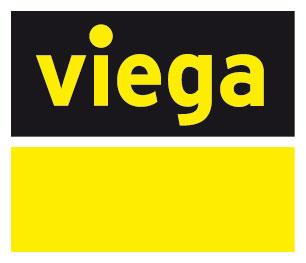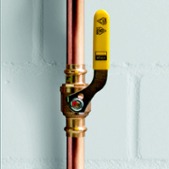Viega is famous for its press technology, meaning no heat or flame is needed to make connections, but how do valves and fittings stand up to real cold?
Burst pipes are expensive nightmares. Last February, Dallas, a city more used to coping with heat than cold, learned the hard way that record cold temperatures, power outages and unprotected pipes combine for disaster. Bursting pipes in powerless businesses and residences caused millions in property damage and left tens of thousands without water. During and following the aftermath of the storm, nearly half of the population of Texas lost water.
While Dallas was an extreme example, every winter brings burst pipes. As contractors, you’re called on to not only repair and replace burst pipes but to use the materials and technologies that will prevent them when possible.
How do Viega fittings hold up to cold environments?
The science behind pipes and fittings freezing, then bursting or leaking is simple. Water expands when it freezes, which can crack pipes and fittings. Sometimes the plumbing bursts outright; other times, small leaks go unnoticed until the plumbing thaws and water begins flowing again.
We get questions every winter about MegaPress fittings being installed outdoors and whether or not water can accumulate in the hub of the fittings, freeze and cause damage. The answer is no.
While water can run down a vertical pipe riser and bead up around the hub of the fitting, there is simply not enough volume or surface area in the fittings to allow enough water to enter to exert enough force to damage a fitting.
That’s because our MegaPress fittings have three components:
- A grip ring
- A separator ring
- A sealing element
The 420 stainless steel grip ring is for mechanical strength. It’s what keeps the fitting on the pipe. The separator ring protects the sealing element from damage by creating a positive physical separation from the grip ring during installation and later during pressing. The separator ring also shields the sealing element from any outside medium, such as water.
Lastly, the sealing element ensures the connection is leak-free. Don’t mistake sealing elements for O-rings, which look similar but perform different functions.
O-rings are installed as part of a dynamic seal so that they move with the assemblies in which they’re installed. Sealing elements are part of a static seal and never move once pressed.
Because O-rings move, they are subject to wear and tear and, when they wear out, they must be replaced. The frequency of replacement depends on the application, material, degree of movement and use.
Because sealing elements are static, they do not suffer the same wear and tear and do not have to be replaced. Once pressed, they are permanent and designed to outlast the fitting they are installed with, in most applications.
Check out our full guide to the difference between O-rings and sealing elements here.
Are Viega fittings completely freeze-proof?
Viega fittings are tested to pressures well above their intended usage:
- MegaPress & MegaPressG carbon steel fittings can be tested hydrostatically up to 600 psi and have an operating pressure rating of 200 psi (MPG 125 psi for fuel gas applications).
- ProPress copper fittings can be tested hydrostatically up to 600 psi and have an operating pressure rating of 300 psi
However, water freezing to solid ice expands in volume by about 9%. That might not sound like much, but, in the right circumstances, it can lift buildings from their foundations and crush the hull of a ship. As the water-ice temperature drops to 0°F, the forces created can range from 25,000 psi to 114,000 psi.
So, Viega fittings are not ice-proof and contractors should follow best practices for installing and protecting systems, just as you would for traditional joining methods, so they are protected against freeze damage.
Is PEX tubing freeze-proof?
PEX tubing can freeze, but it’s less likely to do so than copper tubing. A report from the Plastic Pipes Institute explains why PEX, like Viega’s PureFlow, resists freezing and breakage better than copper.
Water-filled PEX has relatively low thermal conductivity compared to metal (it’s 68 times less conductive than copper for similar material thickness). That means it loses heat to the outside environment more slowly and is less likely to freeze.
Another thing PEX has going for it is its flexibility. Not only does that make for easier installation, but it also means PEX, unlike metal, expands and resists bursting if the water inside freezes. And PEX returns to its original dimensions when the ice thaws.
That’s one reason PEX is safer for fire sprinkler systems, as well. While letting faucets trickle can prevent metal potable water pipes from freezing, that’s not an option with wet fire sprinkler systems. PEX fire sprinkler pipes can safely expand under conditions in which metal or plastic pipes would burst.
In short, Viega products, whether they’re PureFlow PEX, ProPress, MegaPress fittings or valves, are safe to use in the cold and can offer superior protection against damage caused by freezing temperatures.








